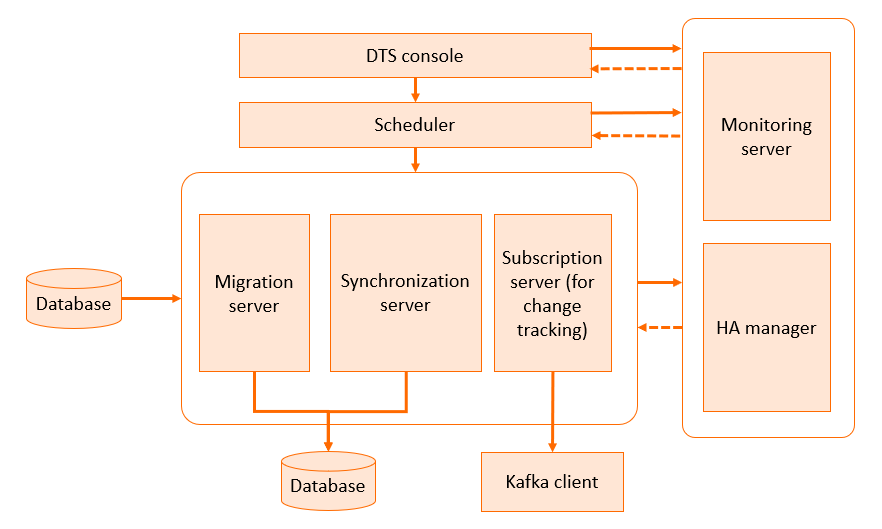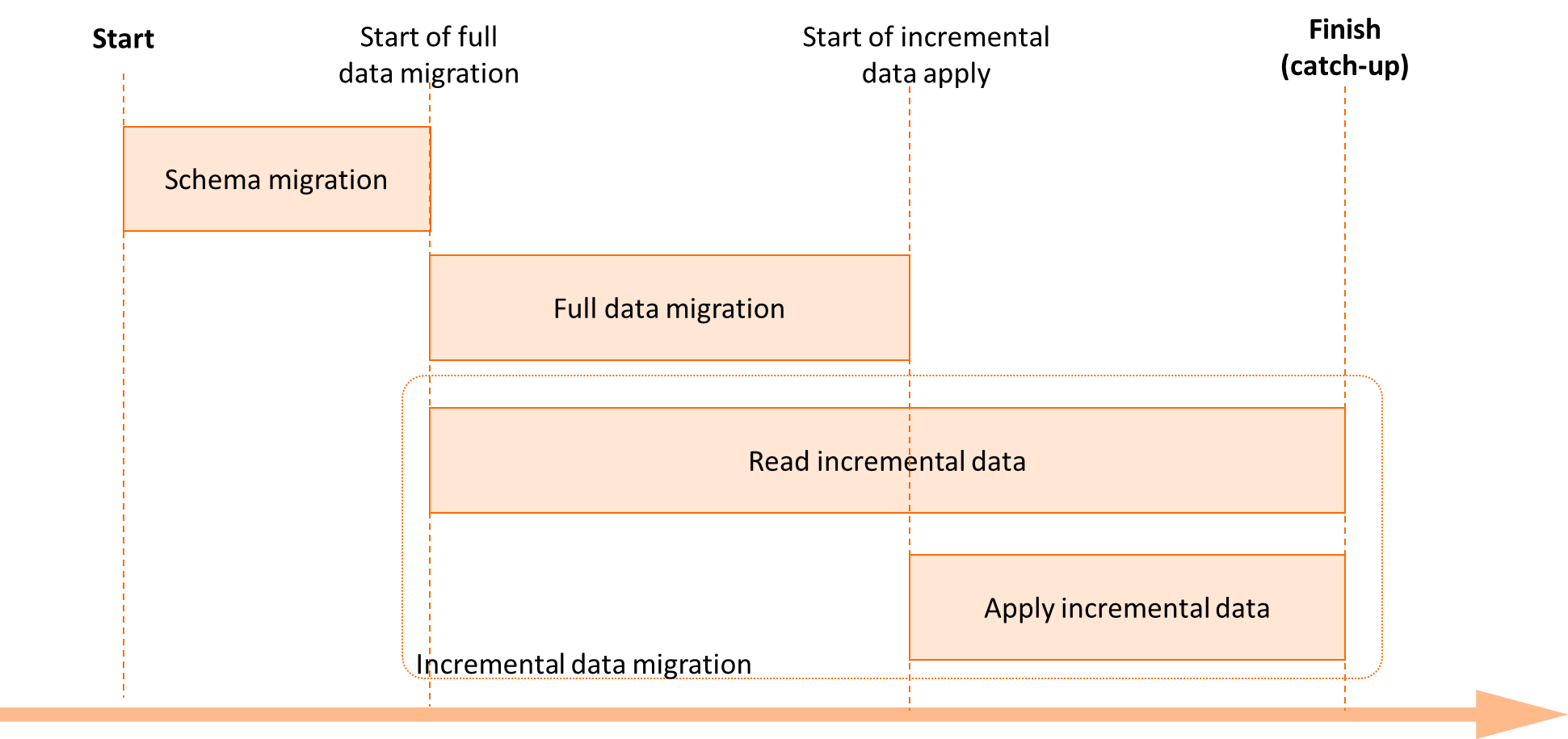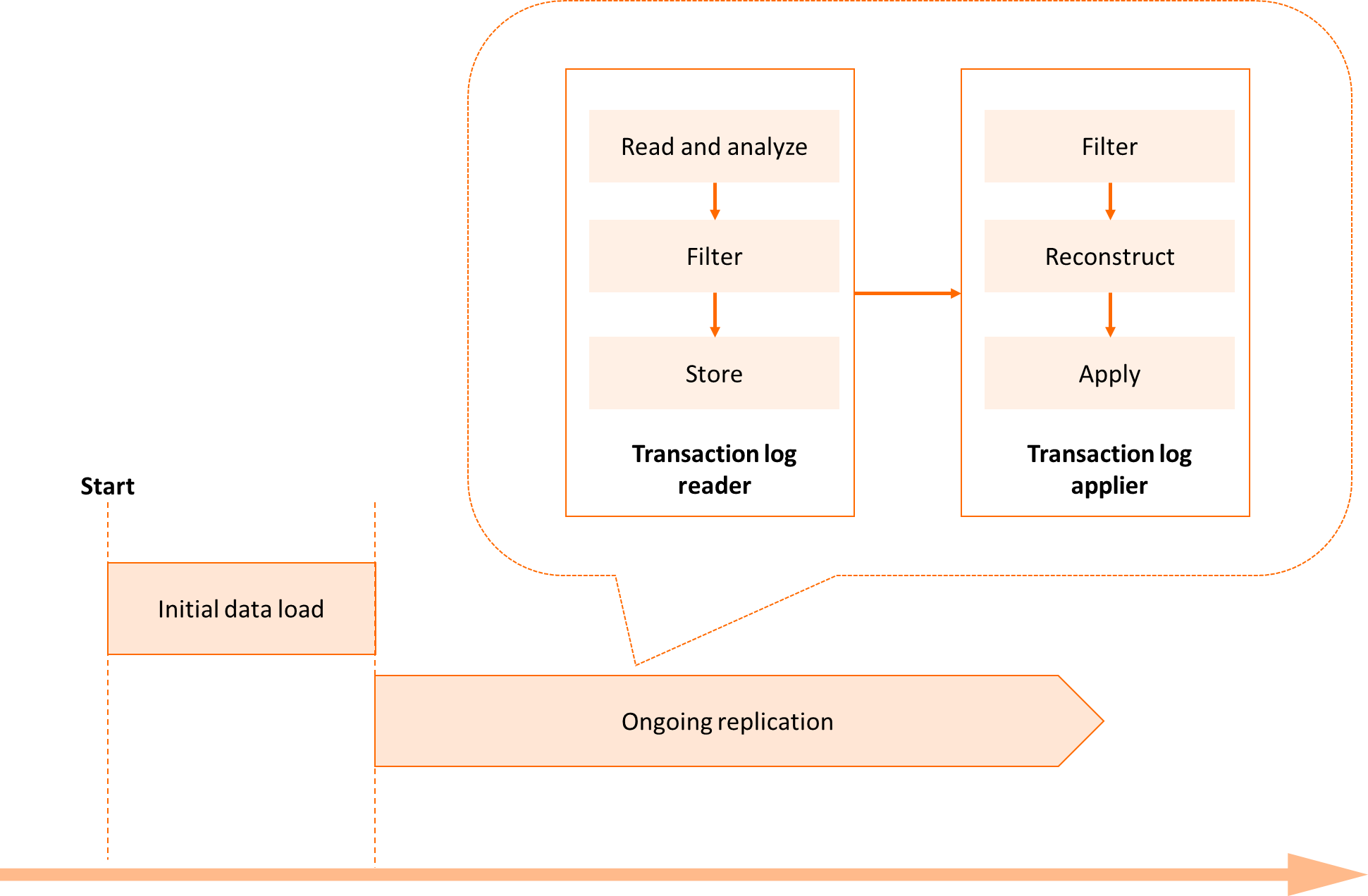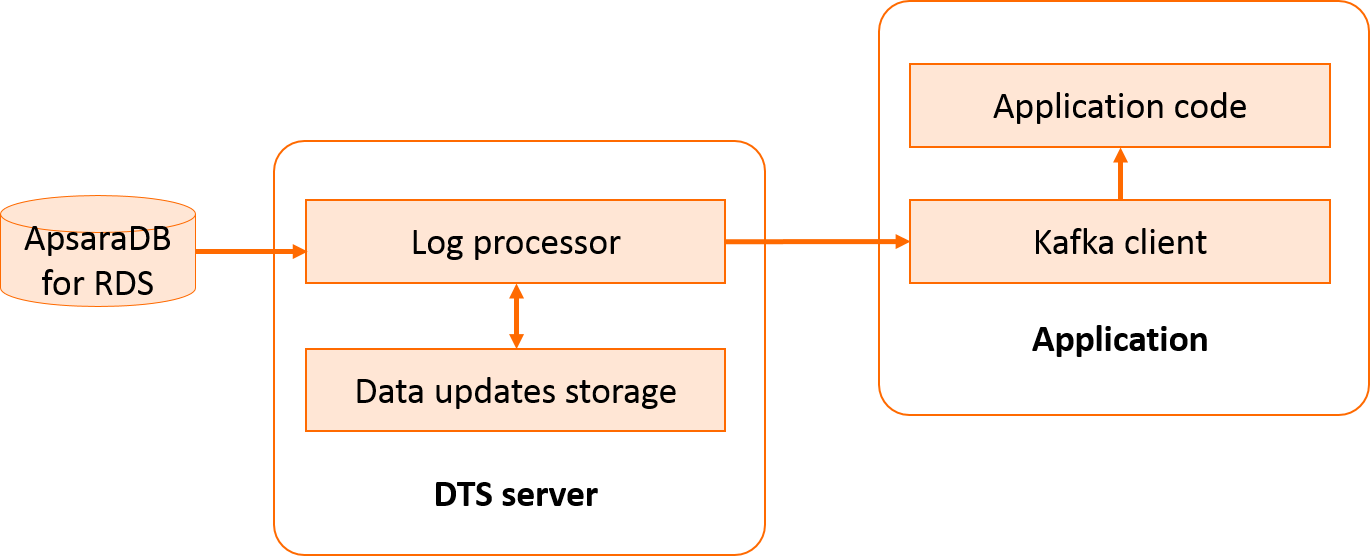Alibaba Cloud Data Transmission Service (DTS) helps you migrate data between data stores, such as relational databases, NoSQL databases, and data warehouses. You can use DTS to migrate your data to Alibaba Cloud or between combinations of cloud and on-premises data systems.
Data Transmission Service (DTS) supports several data replication modes, including data migration, data integration, data synchronization, and change tracking. You can choose a combination of data replication modes that best suit your use cases.
As a managed service, Data Transmission Service (DTS) offers the following advantages over traditional data replication tools:
The architecture of Data Transmission Services provides the following features:

A data migration task consists of several phases, namely schema migration, full data migration, and incremental data migration. To keep the source data operational during the migration, you must select all of these phases in the migration task configuration wizard.
Before migrating data, DTS needs to re-create the schema in the target database. For heterogeneous migrations, DTS parses the data definition language (DDL) code of the source database, translates the code into the syntax of the target database, and then re-creates the schema objects in the target database.
In the full data migration phase, DTS replicates the existing data from the source database to the target database. The source database remains operational and updates are continuously made during the migration process. DTS uses an incremental data reader to capture the ongoing changes that occur during the full data migration process. The incremental data reading is activated when the full data migration starts. During the full data migration phase, incremental data is parsed, reformatted, and stored locally on the DTS server.
When the full data migration process is complete, DTS retrieves the incremental data stored locally, reformats it again, and applies the incremental changes in the target database. This process continues until all ongoing updates are replicated to the target database and the source and target databases are in sync.

The data synchronization mode of DTS replicates ongoing changes between two data stores. This mode is typically used for OLTP-to-OLAP replications. In this mode, a migration task consists of the following two phases:
To replicate ongoing changes, DTS uses two components that work with the transaction log:

The change tracking replication mode of DTS captures data updates and exposes them as a publisher/subscriber stream. You can customize the consumption mechanism for your different applications.
The log processor communicates with the source database using the corresponding protocol to read the transaction log. For example, it uses Binglog Dump to read transaction log data from ApsaraDB for MySQL databases. Then, the log processor parses the transaction log data, filters the data, normalizes the update records, and keeps the processed data in persistence.
The log processor is based on redundant deployments. The HA manager checks the health condition of each server. If an anomaly occurs, the workloads of transaction log reading are resumed on a healthy server.
Data Transmission Service (DTS) helps you migrate data between data storage types, such as relational database, NoSQL, and OLAP. The service supports homogeneous migrations as well as heterogeneous migration between different data storage types.
DTS also can be used for continuous data replication with high availability. Also, DTS can help you subscribe to the change data function of ApsaraDB for RDS. With DTS, you can easily implement scenarios such as data migration, remote real-time data backup, real-time data integration, and cache refresh.
An Overview of How to Integrate 2FA in a VPN Gateway with iDaaS and Active Directory
Empower Online Businesses with Alibaba Cloud Anti-DDoS, WAF, CDN and Cloud Firewall

2,599 posts | 764 followers
FollowAlibaba Clouder - July 9, 2020
Alibaba Clouder - February 22, 2021
Alibaba Clouder - March 1, 2021
Alibaba Clouder - May 27, 2019
Alibaba Cloud Product Launch - January 22, 2019
Alibaba Clouder - January 10, 2018

2,599 posts | 764 followers
Follow Data Transmission Service
Data Transmission Service
Supports data migration and data synchronization between data engines, such as relational database, NoSQL and OLAP
Learn More Big Data Consulting for Data Technology Solution
Big Data Consulting for Data Technology Solution
Alibaba Cloud provides big data consulting services to help enterprises leverage advanced data technology.
Learn More Cloud Migration Solution
Cloud Migration Solution
Secure and easy solutions for moving you workloads to the cloud
Learn More Data Security on the Cloud Solution
Data Security on the Cloud Solution
This solution helps you easily build a robust data security framework to safeguard your data assets throughout the data security lifecycle with ensured confidentiality, integrity, and availability of your data.
Learn MoreMore Posts by Alibaba Clouder